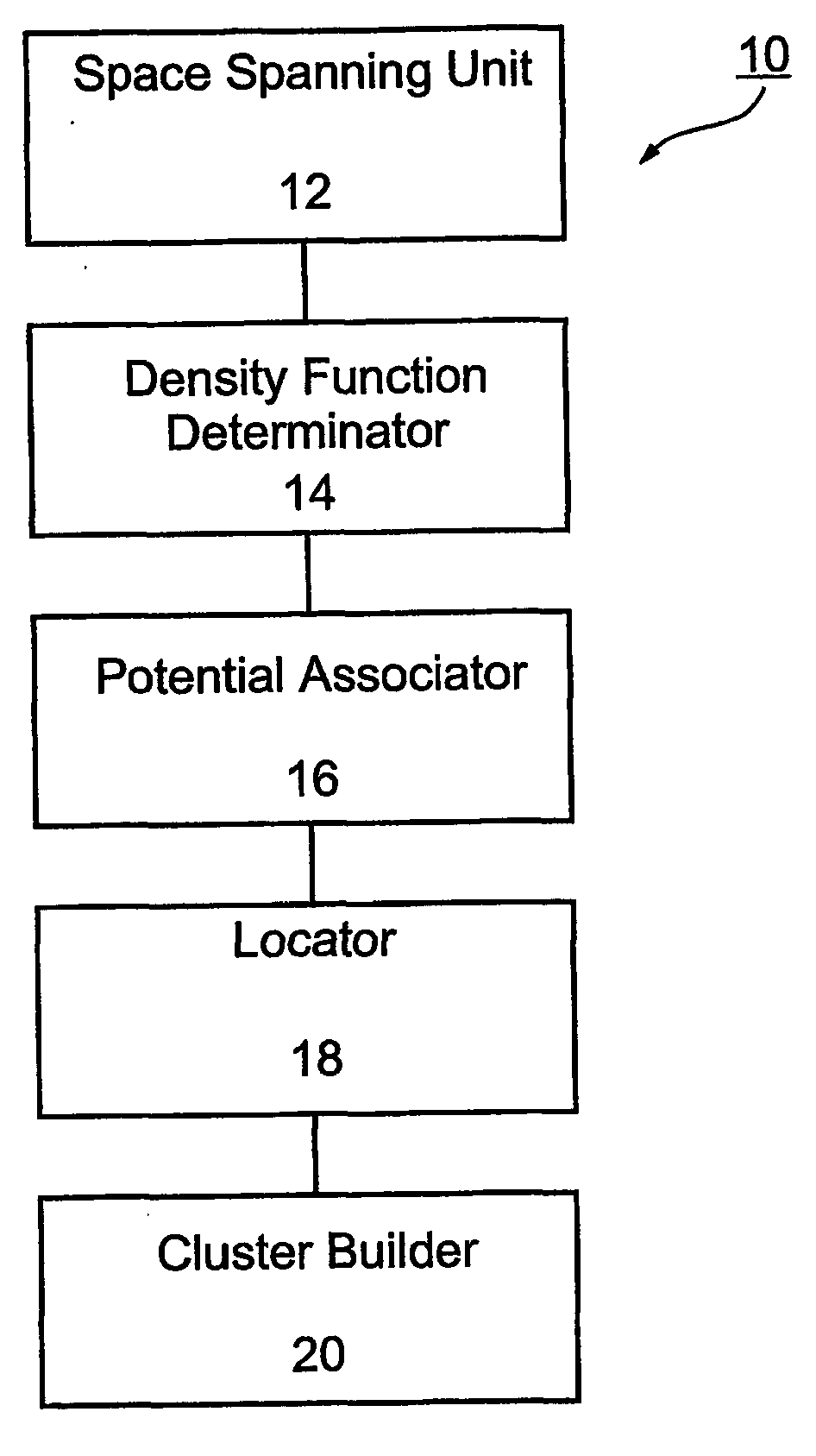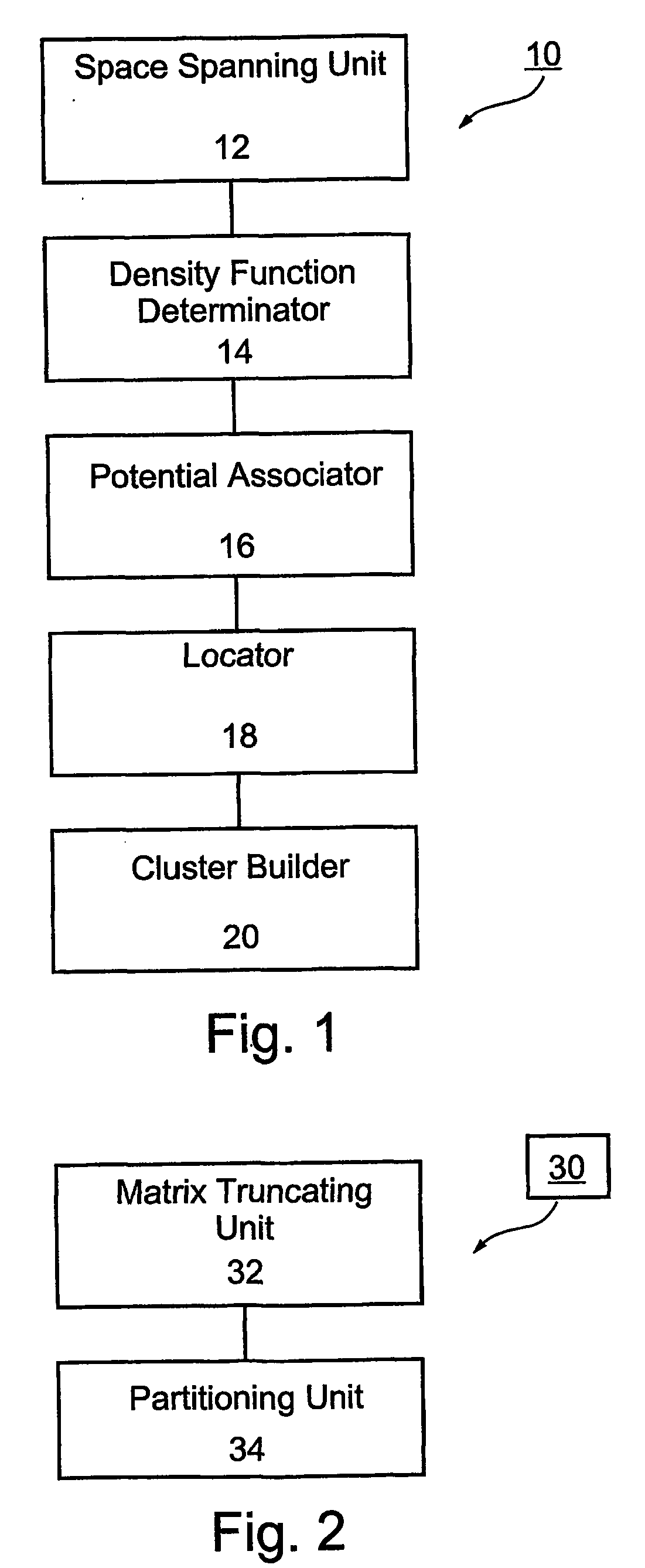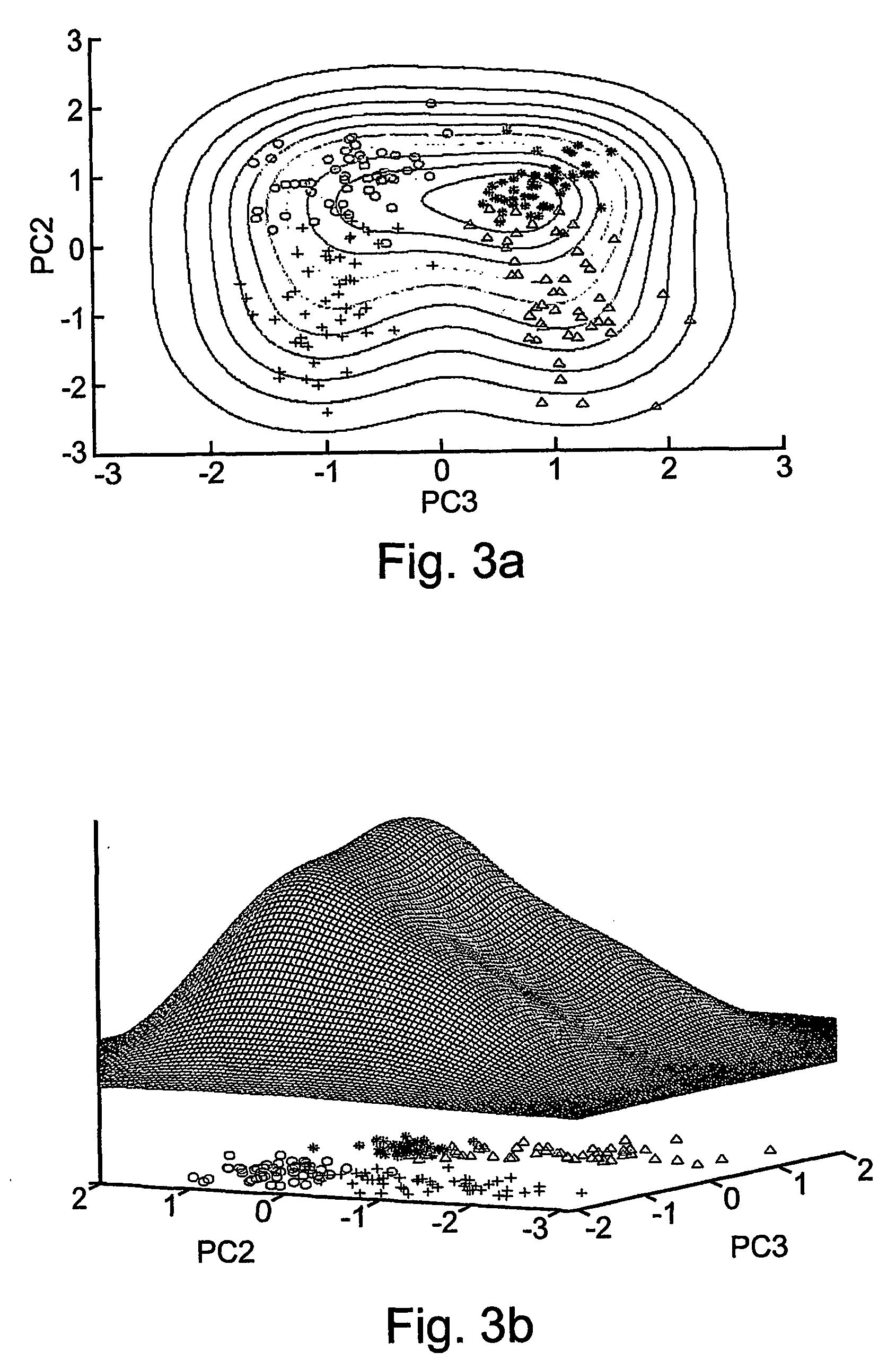Method and apparatus for quantum clustering
a quantum clustering and apparatus technology, applied in relational databases, instruments, data processing applications, etc., can solve the problems of not trivial task of automated data grouping, low degree of automation, and inability to reproduce, so as to reduce the dimensionality of the dataset and stable low minima of v
- Summary
- Abstract
- Description
- Claims
- Application Information
AI Technical Summary
Benefits of technology
Problems solved by technology
Method used
Image
Examples
example 1
Crab Data
[0158] Crab data were taken from B. D. Ripley, "Pattern Recognition and Neural Networks", Cambridge University Press, Cambridge UK, (1996). The set contains 200 samples divided equally into four classes of crabs: two species, male and female each. This data set is defined over a five-dimensional parameter space. When analyzed in terms of the second and third principal components of the correlation matrix one observes a nice separation of the 200 instances into their four classes.
[0159] The correlation matrix which was used was the autocorrelation matrix.
[0160] Reference is now made to FIGS. 3a-b, showing the second and third principal components of the data as well as a contour plot (FIG. 3a) and a three dimensional plot (FIG. 3b) of the density function, .psi., for width value of .sigma..sup.2=0.5. It is quite obvious that this width is not sufficiently small to deduce the correct clustering according to a conventional approach which uses maxima of the density function.
[01...
example 2
Iris Data
[0166] The present invention was tested on an iris dataset of Fisher [R. A. Fisher, Annals of Eugenics, 7, 179 (1936)], obtained from C. L. Blake and C. J. Mer, "UCI Repository of machine learning databases" (1998). The data set contains 150 instances each composed of four measurements of an iris flower. There are three types of flowers, represented by 50 instances each. Clustering of these data in the space of the first two principal components, using .sigma.=0.25, has an amazing result of only four misclassifications.
[0167] The correlation matrix which was used was the autocorrelation matrix.
[0168] Reference is now made to FIG. 10, showing a contour plot of the potential for the iris data. The three minima are denoted by crossed circles and interpreted as cluster centers. The contours are set at values of V / E=0.2, 0.4, 0.6, 0.8 and 1.
[0169] Reference is now made to FIGS. 11a-d, showing the progress of the gradient descent dynamics for the iris data set on principal compon...
example 3
Wine Recognition Data
[0172] The present invention was tested on a wine recognition dataset obtained from C. L. Blake and C. J. Mer, "UCI Repository of machine learning databases" (1998). The dataset represents 13 different chemical constituents of 178 wines manufactured from grapes grown in the same region in Italy but derived from three different cultivars.
[0173] Due to the wide variation between the mean of the features, an additional linear normalization was performed on the dataset. The correlation matrix which was used was the covariance matrix.
[0174] Reference is now made to FIG. 14, showing the first and second principal components of the data as well as a contour plot of the potential, for width value of .sigma.=0.6. The contours are set at values of V / E=0.2, 0.4, 0.6, 0.8 and 1. Beside six misclassifications, originally from the second cluster, the fit of the potential to the data is quite remarkable.
[0175] In FIGS. 15a-d, the number of minima of V is compared to the number...
PUM
 Login to View More
Login to View More Abstract
Description
Claims
Application Information
 Login to View More
Login to View More - R&D
- Intellectual Property
- Life Sciences
- Materials
- Tech Scout
- Unparalleled Data Quality
- Higher Quality Content
- 60% Fewer Hallucinations
Browse by: Latest US Patents, China's latest patents, Technical Efficacy Thesaurus, Application Domain, Technology Topic, Popular Technical Reports.
© 2025 PatSnap. All rights reserved.Legal|Privacy policy|Modern Slavery Act Transparency Statement|Sitemap|About US| Contact US: help@patsnap.com



